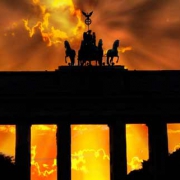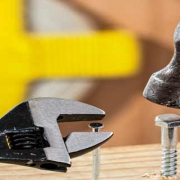LPG in Africa – may the games commence
It is difficult not to be stunned by what happens in energy nowadays. Prices were stratospheric for many years and suddenly have dropped to less than half only to regain a little over the last weeks and months.
Renegade drillers in the US have shaken decade-old certainties and created the shale MasterBlaster. Nothing in my life has shaken the energy world more than just this handful of nutbags in the American Midwest.
It has shaken the geopolitical order of the planet. But an often overlooked collateral is that North America has virtually disappeared as an importer of hydrocarbons and that in many respects it has turned to look almost like an exporter. Let’s not forget that North America has been the biggest net gobbler of energy since my generation can think.
This alone produces huge ripples in the tranquil sea that big energy had been in the past. Courted producer nations are suddenly much less hip.
Even more important, shale has shown the world what can be done with more sophisticated drilling and fluid. Everyone wants to become a shale tiger nowadays. OK, not everyone but China and a couple of other big economies are taking the game to the home front and this should be enough to send further shockwaves down the spines of producing countries.
To exporters it means a bumpy road ahead as new markets have to be developed when the old ones disappear.
This means old-fashioned market development, marketing, sales forces, and all the other gimmicks you know from household appliances. But after all those fat years with buyers beating a path to their doorstep, that’s not an exercise hydrocarbon sellers are very good at anymore so we can expect some blood on the dance floor.
Once the seller’s mind has adapted to the new reality and conforms to the “I need a new market” game plan though, things get truly ugly. Thats because after the planet has been scanned with laser-beam-like eyes, one region of the world must invariably attract the interested viewer.
AFRICA – and especially so the part below the Sahara.
Anyone drawing lines along the energy corridors of the planet will quickly see that they mostly shun Africa as a destination. Some thick beams originate from countries such as Nigeria or Angola to name but two of the biggest exporters but very little ever gets there. So, whatever volumes make it to the African continent are paltry compared to the other regions of the world.
The African continent is the last truly uncharted territory for hydrocarbon exporters, especially so for the LPG folks. LPG sellers have gotten used to huge receiving terminals, huge tank farms, and the Very Large Gas Carrier, or VLGC. Those beasts require colossal infrastructure and real voracious markets able to absorb the huge volumes they deliver.
Those markets are not a dime a dozen, especially in a world that gets its thrills from the US Gulf Coast where US shale producers throw ever more LPG onto the international market in an attempt to ease oversupply in North America.
Coming back to Africa, a glance shows the magnitude of the problem. LPG terminals are rare and those few that exist are on the very, very small side. So small in fact that most commercially sized LPG vessels cannot dump a single cargo into its puny tanks. Plus, onshore tanks are almost always designed for pressurized cargo which means that refrigerated cargo needs to be mixed and warmed up as well before loaded from the vessel into the terminal.
African LPG terminals need a lot of special treatment and very small vessels which makes transporting and landing LPG there a costly affair. No surprise that the appetites of most LPG exporters and/or traders have been lukewarm at best.
But as the world runs short of destinations for its LPG overhang, they will take a second, much harder look at those small terminals and prospective LPG importers for one single reason. Africa is going to be the continent with some of the strongest growing economies on earth. Those countries’ thirst for energy is a potent aphrodisiac to those looking at shrinking markets.
The US considers Africa important enough that President Obama opened the White House for the first-ever US-African summit courting those nations.
But Africa is not a bounty easily enjoyed. Because small terminals are only part of the story.
One cannot simply throw any amount of LPG onto the market at will – however strongly it may grow. Markets need time to adapt to new volumes and to adjust. Bottling plants need to be built and new logistical trails need to be beaten. Local sales partnerships have to be built and consumers have to be served the right kind of LPG.
Most African consumers need very small volumes frequently so the usual big bottles will not do. Very small bottles that can be carried on the head will fit the market better but then again, this needs time to develop.
In Africa, fresh LPG will replace Kerosene which is currently being used in homes to heat and cook. It will replace firewood and even animal dung and turning prospective consumers won’t come at once. Let’s not forget, that doubling LPG consumption in even one of the bigger African economies is merely a drop on top of the volumes of LPG going to China alone every year. It will take many years, even a decade until VLGC’s become a common sight off the African shores.
But no matter what the effort that has to be taken. Sellers of LPG will have to go all the way and a little further to develop this market as it will be their last resort. North America will continue throwing vast amounts of LPG onto the big volume markets drowning them in the process.
Africa is a hard place for building markets but it’s worth it big time and if you have very few or no alternatives, you might want to jump in now. As the African marketplace will take time to develop, it pays to get there early and string up some alliances with local players. The games are open.


















Leave a Reply
Want to join the discussion?Feel free to contribute!